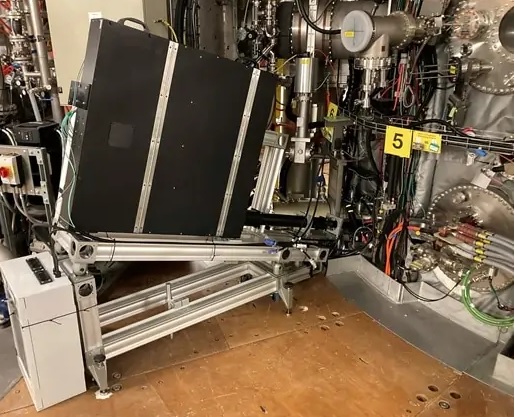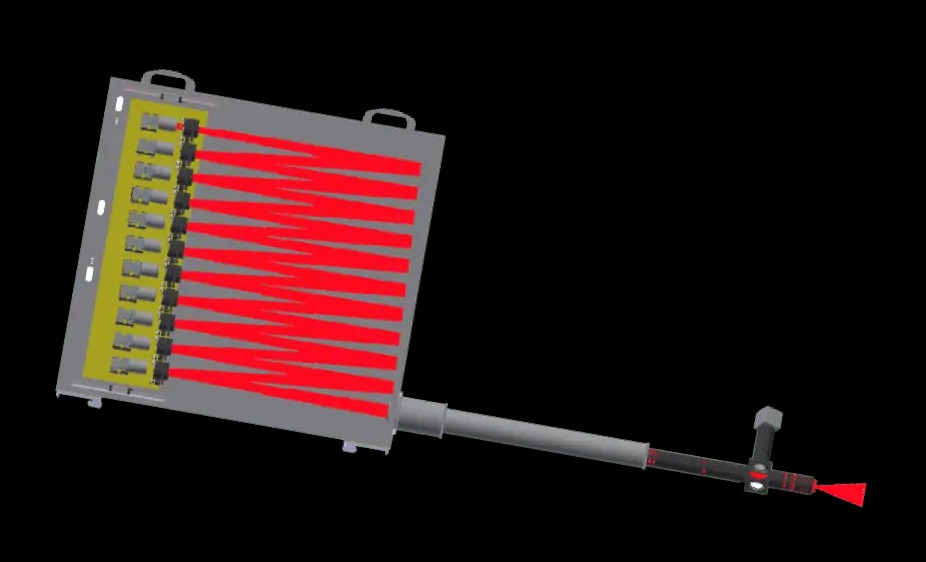A new, multi-wavelength imaging (MWI) camera diagnostic fitted on tokamak MAST Upgrade, will offer scientists a picture of the impact that the machine’s Super X divertor design has on the hot, charged plasma. The tool is based on MANTIS, a diagnostic tool developed by DIFFER.
The Super X divertor or ‘exhaust’ system on MAST Upgrade has already shown at least a tenfold reduction in the heat leaving the main plasma chamber. And now, thanks to a new filtered imaging system – which provides 11 views of the divertor simultaneously - scientists will be able to get more insight into how this divertor works than ever before.
Multitasker

Light emitted by the plasma in the divertor region is routinely measured by scientists in order to work out the plasma conditions and plasma performance. The MWI has 11 cameras, each of which is filtered so as to target a different wavelength band of this emitted light - a different color. Due to a physics process called ‘spectral line emission’, these different wavelength bands correspond to light emitted by different elements that are present in the plasma. This means that some of the MWI cameras can be used to capture videos of the main hydrogen fuel, while others can be used to capture videos of impurity elements like carbon and helium at the same time. Since the original MAST experiment only had a single filtered camera viewing its divertor, the MWI captures a lot more useful data each time the experiment runs.
Similar
The MWI system has been developed over the last three years through a collaboration between Durham University, the University of York and scientists at Culham. It builds on similar work by scientists at DIFFER and the TCV tokamak in Switzerland. DIFFER collaborators from the research groups PEPD (Plasma Edge physics and Diagnostics) and ESC (Energy Systems & Control) are now playing an important role in helping scientists at Culham interpret the MWI data taken on MAST Upgrade.
11 in a row
Joe Allcock, Spherical Tokamak Imaging Researcher at UKAEA, said: “The MWI camera system is essentially 11 cameras in a row inside a large black box with a tube at one end. This tube looks down through a port window and into the divertor region below the main plasma chamber. Joe added that one of the key performance indicators of a divertor was the amount of power deposited by the plasma onto the walls.
New divertor
“We developed this Super X design because our physics simulations predict we should see a drop in the power that’s reaching the divertor target. By comparing these simulations to data from the MWI and other diagnostics, we can gauge how accurate our physics understanding is, and how reliable our predictions will be when we design a future fusion reactor.
Wide view
“Whereas other diagnostic techniques – like the Thomson scattering laser system – offer an excellent picture at a few single points in the plasma, the MWI has a wide view, helping us build up a comprehensive idea of what is happening, and where, across the divertor. This is essential for improving our understanding of the physics behind the Super X.”
Source news item
CCFE, Culham Centre for Fusion Energy
Differ groups involved
Energy Systems & Control
Plasma Edge Physics and Diagnostics

Go to the News page.